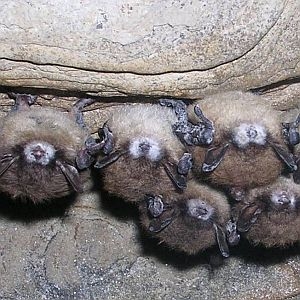
(Host) Researchers have identified several drugs that work – at least in a laboratory – against the fungus that’s destroying hibernating bat populations.
White-nose syndrome has killed more than a million bats since its discovery near Albany in 2006.
The findings, by New York’s Department of Health Laboratory in Albany, were reported Sunday at a microbiology conference in Boston.
Wildlife biologist Scott Darling is working on the epidemic in Vermont, one of the states hardest hit.
Darling says the research is a positive step. But he says getting from lab results to success in the wild poses challenges.
(Darling) "One is how can you possibly treat a remaining population of bats as they go into the hibernation season? Is there a particular time of year that you can easily catch them and treat each one individually? And the second challenge is can you come up with a treatment that can last all winter long when these bats are hibernating?"
(Host) The researchers have also found antiseptics that might help de-contaminate areas where bats live — and keep people who visit those places from spreading the disease.
But Darling says caves are complex ecosystems. And while spraying antiseptics might help bats, it might upset the natural balance in unforeseen ways.
For that reason, much of Vermont’s research has focused on abandoned mines, where bats also live.
Last winter Darling’s team brought in healthy bats from Wisconsin to hibernate in two Vermont mines.
(Darling) "We were testing the hypothesis that healthy bats could get infected from the environment itself and not from other bats."
(Host) Darling says the uninfected bats did get the disease. He says that reinforces the idea that antifungal treatments need to be long-lasting, to prevent the animals from being re-infected by their surroundings.